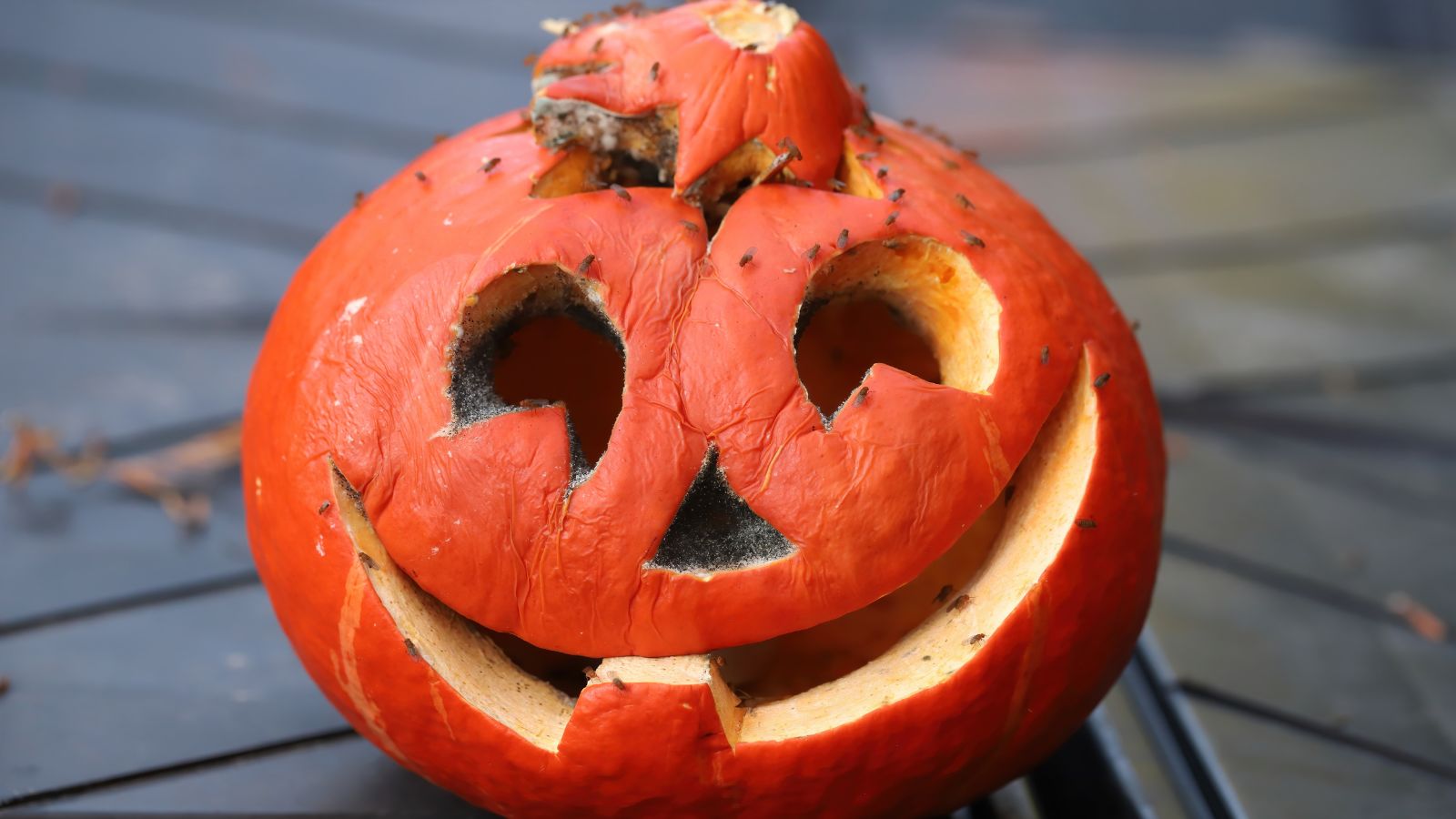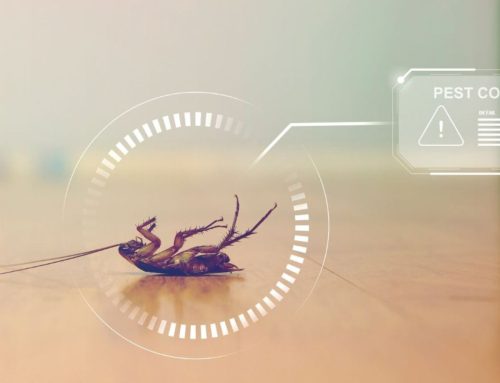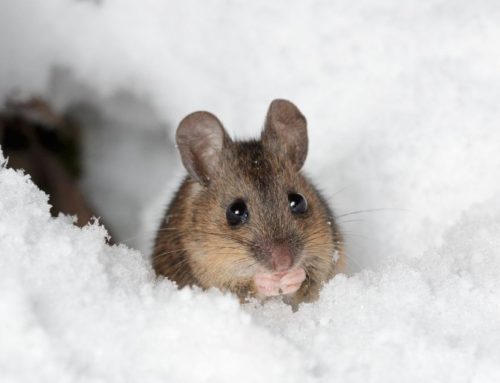After Halloween, many people store their decorations without realizing the risks they leave behind. Pests like spiders, rodents, and insects often find their way into items stored after trick-or-treaters finish their rounds, creating hidden nests that can spread into the home. The most effective way to prevent pest problems after Halloween is to inspect and properly store decorations in sealed, pest-proof containers.
Leftover candy, pumpkin remains, and stubborn décor can easily attract unwanted pests if not cleaned up thoroughly. Pests take advantage of these food sources and cozy hiding spots, leading to infestations that last well beyond the holiday. Taking simple precautions can protect homes from these post-Halloween issues.
Understanding what those decorations left behind can help reduce pest risks. By addressing moisture, food, or tiny holes pests use as entry points, homeowners can avoid creepy crawlies and the potential health risks they bring. With the right steps, homes stay safe and ready for the next season.
Post-Halloween Pest Prevention: What Those Decorations Left Behind
Common Post-Halloween Pest Problems
After Halloween, certain leftover items can attract pests. Candy, decorations, and damp materials all create inviting conditions for rodents, insects, and mold. Understanding these risks helps prevent infestations and damage.
Attracting Rodents with Leftover Candy and Food
Rodents are highly drawn to sugars and starches. Jack o’ lanterns left to rot and sticky candy near porches or doorways can easily attract rodents into your home
Even discarded wrappers from trick-or-treaters provide an abundant food source and may lure mice through tiny holes or gaps in siding. Prompt cleanup is key to pest prevention.
Unsealed containers or boxes with food scraps worsen the problem. To prevent rodents, all candy should be cleaned up promptly. Dispose of wrappers and uneaten food in sealed bags or bins.
Regularly checking and sealing potential entry points around the house also limits rodent access after Halloween.
Hidden Insect Infestations in Decorations
Decorations stored from one year to the next often harbor insect pests. Spiders, roaches, and even ants can live in plastic bins or boxes, especially if they are not tightly sealed.
Fake spider webs sometimes cover real spider webs, hiding the problem until decorations are unpacked. This can cause a sudden appearance of spiders indoors.
Organic materials like dried corn husks or wooden items can attract termites and beetles.
Careful inspection and thorough washing are essential for effective post-Halloween pest prevention. Storing items in pest-proof containers reduces pest infestation risks.
Mold and Mildew from Damp Decorations
Damp decorations, such as improperly stored carving pumpkins, create a prime environment for mold and mildew growth. Spoiled organic decor can mimic conditions of a haunted house, spreading odors and contamination.
Pumpkins left outside too long or decorations with fabric and paper components absorb moisture, inviting fungal growth. Mold not only damages decorations but can also cause health problems if spores spread indoors.
Before storing decorations, ensure they are dry and clean. Using moisture absorbers or airing out items can prevent mold buildup. Storing decorations in dry, ventilated areas also helps.
Identifying Pest Entry Points After Halloween
After Halloween, decorations can leave behind new openings and weak spots that creepy crawlies can use to enter a home. Small cracks, gaps around doors and windows, and issues near fireplaces or attics often provide easy access to insects and rodents.
Cracks and Gaps from Decorating Activities
Putting up and taking down decorations can cause damage to walls, siding, and trim. Nails, staples, or hooks might leave small holes or cracks.
These openings are big enough for tiny pests like spiders, ants, and even mice to slip inside. Moisture can also collect in damaged areas, attracting pests even more.
It’s important to inspect all areas where decorations were attached. Sealing holes with caulk or weatherproof filler prevents unwanted guests from sneaking in.
Gaps Around Windows and Doors
Windows and doors are common entry points for pests after decorations are removed. Weather stripping can wear out, and gaps between frames and walls can form.
Even spaces as small as 1/8 inch can be entryways for pests like cockroaches and rodents.
Check for missing or damaged seals and replace or repair them promptly. Adding door sweeps and using foam sealant in gaps can create a tighter barrier.
Fireplace and Attic Vulnerabilities
Fireplaces and attics often have hidden openings that pests find attractive. Chimneys without proper caps can allow birds, bats, and squirrels inside. Attic vents that lack screens are common access points for insects.
Decorations hung near these areas may damage screens or create openings. It’s crucial to inspect chimney caps, vent screens, and attic access points after removing decorations.
Installing or repairing screens and caps blocks pest entry and protects the home from infestations.
Cleaning and Storing Decorations to Prevent Pests
Removing food and moisture from decorations is key to keeping pests away. Proper disposal of organic items, careful cleaning of reusable pieces, and selecting the right storage containers all help stop pests from nesting or damaging decorations.
Properly Disposing of Organic Decor
Organic decorations like dried leaves, popcorn strings, or candy must be discarded after Halloween. These items attract rodents and insects looking for food or shelter.
If decorations contain edible parts, they should never be stored. Instead, compost or trash them to avoid inviting pests into the home or storage space. Any leftover bits on other decorations should be removed before storage.
Keeping organic materials out prevents mold and insect colonies from growing on the decorations. This step reduces the chances of infestations once decorations are packed away.
Washing and Inspecting Reusable Items
Reusable decorations should be thoroughly cleaned before storage. Dust, dirt, food crumbs, and moisture can all attract pests like ants, spiders, or mice.
They should be wiped down or washed according to the material’s care instructions. For plastic or glass items, soap and water work well. Fabric and paper decorations may require gentle brushing or vacuuming.
After cleaning, inspecting each decoration carefully for pest droppings, webs, or eggs is essential. Any infested items should be treated or discarded to prevent the spread of pests in storage.
Choosing Pest-Resistant Storage Solutions
Using the right containers can block pests from reaching decorations. Thick plastic bins with tight-sealing lids protect better than cardboard boxes, which pests easily chew through.
Containers should be airtight to stop insects, rodents, and spiders. Labeling each bin helps keep decorations organized and avoids unnecessary opening, reducing pest risks.
Storage areas should be dry and clean. Keeping decorations off the ground on shelves or pallets further protects them from moisture and crawling pests.
Long-Term Pest Prevention Strategies
Consistent monitoring, annual inspections, and knowing when to call experts are critical for post-Halloween pest prevention. If infestations continue despite precautions, hiring a professional pest control service is the wisest solution.
Experts can identify specific threats like bed bugs or rodents and develop treatment plans. Many homeowners even seek pest repellent decorations to further reduce their risks.
Monitoring for Signs of Infestation
Regularly inspecting areas near and inside the home is essential. Look for droppings, damaged wood, chewed wires, or nests. Pay close attention to basements, attics, and crawl spaces.
Using sticky traps or bait stations can help detect pests early. Check these traps weekly and replace them as needed. Early detection makes controlling infestations easier and less costly.
Documenting where signs are found and how often can reveal patterns. This helps target specific problem spots before pests multiply.
Routine Home Maintenance Tips
Sealing cracks and gaps around doors, windows, and foundations reduces pest entry points. Use weather stripping and caulk to close any openings larger than 1/8 inch.
Properly storing food and disposing of garbage promptly removes pest food sources. Clean up spills and crumbs regularly.
Keep yard vegetation trimmed and away from the house. Moisture control is also vital, so fix leaks and improve drainage around the home.
Regularly cleaning gutters and removing debris prevents pest shelters near the foundation or roof.
When to Call a Professional
If pest problems persist despite preventive efforts, it’s time to contact a pest control expert. Professionals can identify the type of pest accurately and assess the extent of infestation.
They use specialized tools and treatments not available to homeowners. Many companies also offer long-term maintenance plans to monitor and prevent future issues.
Hiring a professional can save money in the long run by avoiding significant damage and repeated treatments. Prompt action ensures pests are managed safely and effectively.
Frequently Asked Questions
Proper removal and storage of Halloween decorations can help prevent pests like spiders, rodents, and moths from entering the home. Recognizing signs of infestations early and cleaning thoroughly are key steps to maintaining a fun and pest-free environment after Halloween.
How can I safely remove Halloween decorations without attracting pests?
Remove decorations carefully, checking for any pests or webs. Shake out or brush off outdoor items before bringing them inside.
Avoid leaving decayed pumpkins or organic decor outside, as they attract insects and rodents. Dispose of them promptly in sealed bags.
What are the common signs of pests after Halloween?
Look for droppings, chewed materials, or small holes in stored decorations. Notice any unusual smells or damage on boxes and fabrics.
Spider webs that were not part of the decorations can indicate real spider activity. Listen for sounds of rodents moving or scratching.
Which preventive measures should I take when storing Halloween decorations?
Store decorations in sealed plastic containers rather than cardboard boxes. Keep them in dry, cool places to avoid moisture buildup.
Clean all items before storing to remove dirt or food residue that might attract pests. Inspect decorations annually for any signs of infestation.
Can leftover Halloween candy attract pests, and how do I prevent this?
Yes, candy left out can attract ants, rodents, and insects. Store leftovers in sealed containers and keep them off the floor.
Dispose of any opened or sticky candy promptly. Clean sugary spills immediately to avoid pest attraction.
What cleaning strategies work best for post-Halloween pest control?
Vacuum and sweep both indoor and outdoor areas thoroughly, especially places where decorations were placed. Use soapy water to clean surfaces.
Disinfect areas where food or candy was kept. Clear out any fallen leaves or organic debris near the home’s entry points.
Are there any natural or chemical-free methods for deterring pests after Halloween festivities?
Hairspray sprayed lightly on outdoor decorations can deter birds and insects. Placing dog hair or natural repellents like citrus peels near decorations can discourage pests.
Regularly airing out stored items and exposing them to sunlight can also reduce pest presence without chemicals.
Hire a Professional – ABC Termite & Pest Control Company – Omaha & Lincoln
If you’re concerned about pest infestations or want a professional to evaluate your home’s pest prevention strategies, don’t hesitate to reach out to a local Nebraska pest control expert.
Find a reputable pest control company in Omaha or Lincoln that you TRUST. Ask about their termite inspection and pest management services. You may think you are saving money; however, a single misapplication could have significant and adverse or deadly consequences for you or your loved ones. Contact ABC Termite & Pest Control in Omaha & Lincoln, NE to talk with an exterminator today!






